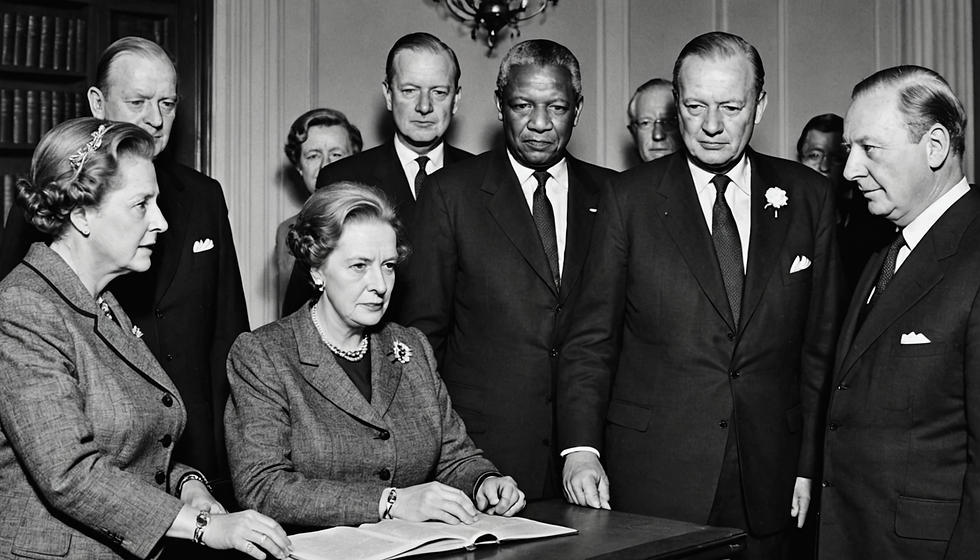Power: Forms, ranking, best uses in leadership
- R.M. Boylan

- Jan 21
- 4 min read
Updated: Feb 16

Power: It's use in leadership
Power manifests in various forms. In the business world, individuals often ascend and obtain authoritative or positional power. In contrast, social, civil, and political contexts today increasingly rely on referent power. Before the advent of social media, there were leaders such as Mahatma Gandhi and Nelson Mandela who rose through grassroots efforts. Nowadays, with digital media and military espionage, individuals with referent power who have the potential to become great future leaders are likely identified early. Consequently, any future popular uprisings and leaders with referent power are swiftly suppressed, quelled, and dismantled, depending on the interests they serve.
Referent power ranks second, yet it stands as the most potent in energy and influence, even without positional or authoritative power, due to its contagious nature. Leadership is described as "the capacity to persuade someone to do something they would not have done otherwise." This can also involve the use of force or the use of coercive power in leadership.
The use of "coercive power" is one of the weakest forms of power. It should be a last resort at all times and understood to be used only when all other forms of power for persuasion fail. A weak leader uses this form of power first. It is a sign of psychopathy when used as a god to method to change behavior or obtain power and control. Hofstede's model on masculine vs. more feminine index cultures and consequence explains the causes of this.
In these articles, we will explore leadership through the lens of mental engagement and the higher executive functions of the mind. We will also compare this with the application and misuse of the mind's lower executive functions, the reptilian core in leadership.
Forms of Power
1. Authoritative Power 25%
Definition: Authoritative power is derived from a leader's ability to enforce rules and regulations, often based on their position within an organization or society. This form of power is recognized and accepted by followers, who comply due to the leader's legitimate authority.
In the wrong hands, authoritative power can be a dangerous weapon of oppression and destruction. As was seen in the Second World War with Adolf Hitler, followers mimic leaders or figures in authority. The Milgram Experiment revealed that up to 65% of followers are willing to inflict pain on others when an authoritative figure tells them to do it.
Conversely, leaders with authoritative power have the most power to get followers to do good things and even great things for society and humanity.
Percentage Importance: 25%
References: French, J.R.P. & Raven, B. (1959). "The Bases of Social Power." In Studies in Social Power.
Effective Use: Franklin D. Roosevelt effectively used authoritative power during the New Deal, implementing policies that were accepted due to his presidential authority.
Ineffective Use: Adolf Hitler exemplified poor use of authoritative power, leading to authoritarianism and widespread human rights abuses inflicting tragic pain and suffering on the world which will be remembered forever.
2. Referent Power 20%
Definition: Referent power comes from the personal traits and respect a leader commands. Followers are drawn to the leader's charisma and interpersonal skills, fostering loyalty and admiration.
Percentage Importance: 20%
References: Raven, B.H. (1993). "The Bases of Power: Origins and Recent Developments." Journal of Social Issues.
Effective Use: Nelson Mandela effectively used referent power, inspiring loyalty and unity in post-apartheid South Africa through his personal integrity and vision.
Ineffective Use: Jim Jones of the Peoples Temple misused referent power, leading followers to tragic outcomes due to manipulation and coercion.
3. Positional Power 20%
Definition: Positional power is based on the formal authority granted to a leader by their position within an organization. This includes the ability to reward or punish subordinates.
Percentage Importance: 20%
References: Kotter, J.P. (1990). "What Leaders Really Do." Harvard Business Review.
Effective Use: General Dwight D. Eisenhower effectively used positional power during World War II to lead Allied forces to victory.
Ineffective Use: Richard Nixon’s misuse of positional power during the Watergate scandal resulted in a loss of trust and his eventual resignation.
4. Knowledge Power 15%
Definition: Knowledge power stems from possessing specialized information or expertise that others do not have. This form of power can influence decisions and actions based on the leader's insights.
Percentage Importance: 15%
References: Nonaka, I. & Takeuchi, H. (1995). "The Knowledge-Creating Company." Harvard Business Review Press.
Effective Use: Steve Jobs used knowledge power in technology and design, leading Apple to become a leader in innovation.
Ineffective Use: The BP oil spill in 2010 illustrated poor use of knowledge power, as executives ignored critical safety information, leading to a catastrophic disaster.
5. Coercive Power 10%
Definition: Coercive power is based on the ability to force compliance through threats or punishment. This power can create fear among followers.
Percentage Importance: 10%
References: Raven, B.H. (2008). "The Bases of Power and Power/Interaction Model of Interpersonal Influence." Analyses of Social Issues and Public Policy.
Effective Use: Coercive power can be seen in military contexts where compliance is necessary for operational success.
Ineffective Use: The Soviet Union under Stalin is a historical example of poor use, where coercive power led to widespread oppression and purges.
6. Reward Power 10%
Definition: Reward power is based on a leader's ability to provide rewards or incentives to followers for compliance or performance.
Percentage Importance: 10%
References: French, J.R.P. & Raven, B. (1959). "The Bases of Social Power." In Studies in Social Power.
Effective Use: Leaders like Bill Gates have effectively used reward power to motivate employees through bonuses and recognition.
Ineffective Use: Poor application can be seen in organizations where favoritism undermines morale and leads to resentment.
Conclusion
Understanding these forms of power is essential for effective leadership. Leaders must balance these powers wisely to inspire, motivate, and guide their followers while avoiding the pitfalls of misuse that have led to historical failures.
References:
1). chrome-extension://efaidnbmnnnibpcajpcglclefindmkaj/http://www.communicationcache.com/uploads/1/0/8/8/10887248/the_bases_of_social_power_-_chapter_20_-_1959.pdf
3). Bass, B.M., Riggio, R.E. (2006). Transformational Leadership. Second Edition. Lawrence Erlbaum Associates, Publishers.
4). Boylan, R.M. (2006-2009). Conflicts and considerations comparing Abraham Maslow's hierarchy of needs to Jane Loevinger's model of ego development for assessing the level of development of a leader. M.A. Leadership Studies.





Comments